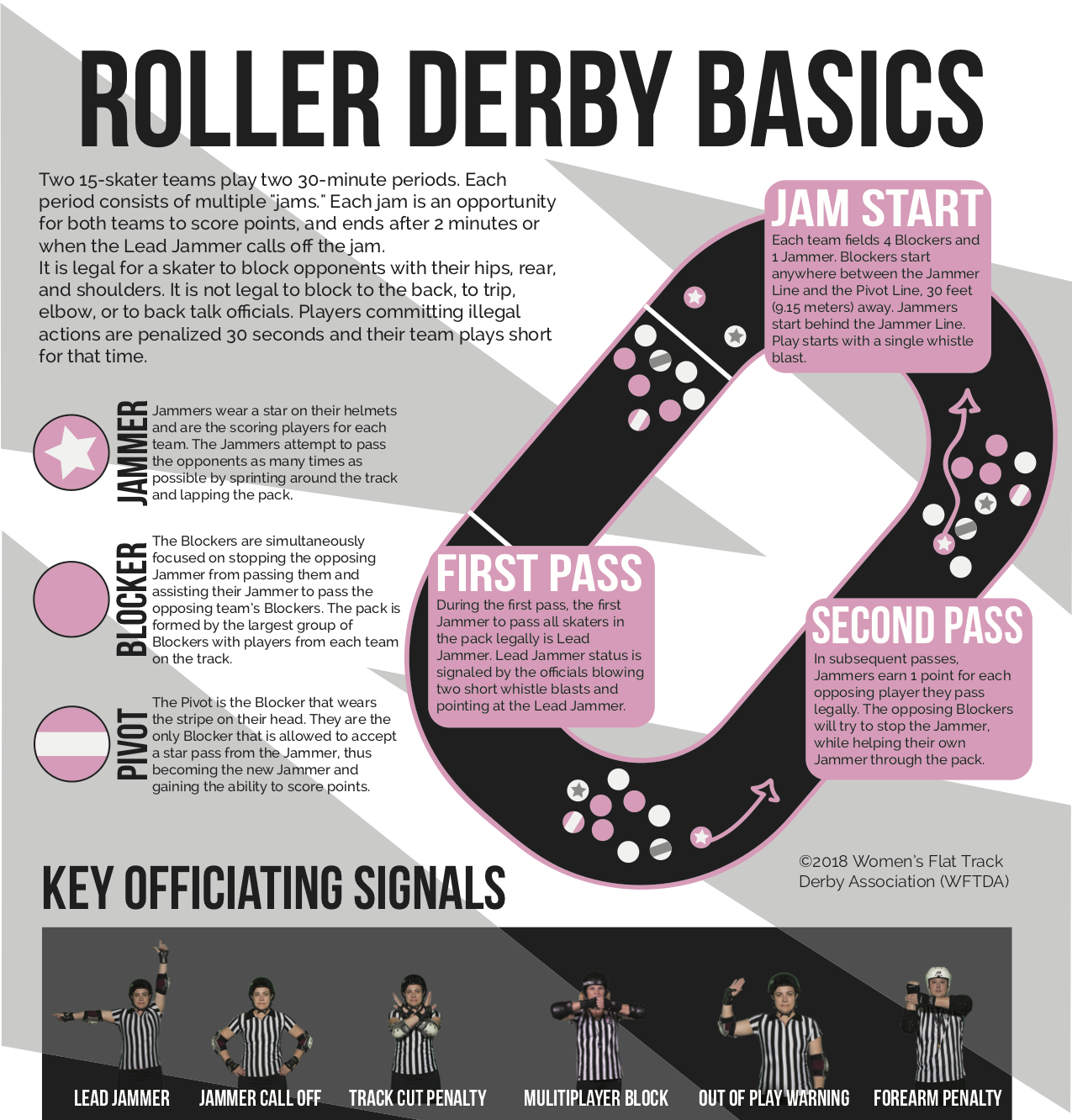Welcome to
Fort Wayne Roller Derby
ROLLER DERBY
The Basics of Flat Track Roller Derby
The Positions
JAMMER: Tears through the pack and scores points by passing members of the opposing team. She wears the helmet with a star.
BLOCKER: Tries to stop the jammer and makes life
difficult for the opposing team’s blockers. There can be up to four
blockers on the track for each jam.
PIVOT: The head blocker wears the helmet with a
stripe. She will often command the pack and is the only blocker who can
receive a “star pass” to take the place of the jammer in the middle of a
jam.
The Gameplay
The jam begins with the jammers behind the line and the blockers in
front of it. When the whistle blows, the jammers blast off and fight
their way through the pack. The first jammer to pass all of the opposing
team’s blockers becomes lead jammer.
After making their initial pass, each jammer receives one point for
each member of the opposing team that they pass. Each jam lasts up to
two minutes, or until the lead jammer calls it off by tapping their
hips.
You’ll often see the lead jammer call off the jam as the opposing
jammer is nearing the pack, right before the opposing jammer has a
chance to score any points.
Penalties
Penalties can occur for a number of reasons, but some of the most common are:
- Illegal blocking – using an illegal body part to hit (elbows,
- forearms) or hitting another player illegally (middle of the back,
- clotheslining, above the neck, or below the knees)
- Cutting the track – Passing an opposing player while out of bounds
- Multiplayer blocks – Creating an impenetrable wall
When a penalty is issued, the offending player must leave the track
and skate clockwise to the penalty box. Once seated in the box, the
30-second penalty begins. After 20 seconds, the offending player will
stand, wait the remaining 10 seconds, then re-enter gameplay.
For the comprehensive official WFTDA rules visit www.WFTDA.com and click on Official Rules.
Common Questions
Isn’t roller derby fixed, like wrestling?
No way! Modern roller derby is completely non-scripted and very real.
Anyone who has attended one of our games will tell you that this is a
real sport with real rules, real fouls, and real athletes. It’s been a
challenge to convert the “scripted” sport of roller derby into a fair
and safe activity, but with the collective efforts from WFTDA’s member
leagues, roller derby has made the transition to honest competition.
What happened to banked tracks with rails that you flip over?
For fifty years, roller derby was played primarily on concave
(banked) tracks. These tracks were big and expensive and required
reassembly as the derby skaters of the time barnstormed from town to
town. In 2001 and 2002, skaters in Austin, Texas, lacking (at the time)
the budget for a banked track, created the first drafts of a modified
rule set to allow the same basic game to be played on a flat surface.
The popularity of this style of play has been exploding around the
world, as the ‘play-anywhere’ nature of the flat game has allowed
skaters to learn the game without investing in a banked track
infrastructure. The flat track version brings the skaters closer to the
fans, and makes them more accessible than normal pro-sports figures. It
literally puts the skaters in the laps of the fans … and they love it!
